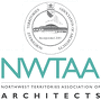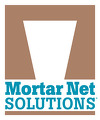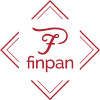
Northwest Territories Association of Architects
The Northwest Territories Association of Architects is mandated by the Architects Act to regulate the practice of architecture, govern the profession, and establish and maintain standards of knowledge, skill, care and professional ethics among authorized practitioners to serve and protect the interests of the public.
Click to Learn More About the Northwest Territories Association of Architects
Visit www.nwtaa.ca and Join Now!

 Ensuring a building’s roof is waterproof, on top of being structurally sound, is critical to the success of any building project. This course examines rapid curing, polymeric liquid-applied waterproofing membranes for roofing and other demanding applications. Discussions include the history of PMMA, PMMA system components and characteristics, the installation process, and the versatility of PMMA products.
Ensuring a building’s roof is waterproof, on top of being structurally sound, is critical to the success of any building project. This course examines rapid curing, polymeric liquid-applied waterproofing membranes for roofing and other demanding applications. Discussions include the history of PMMA, PMMA system components and characteristics, the installation process, and the versatility of PMMA products.

https://redirect.aecdaily.com/s13250/www.aecdaily.com/course/909350
This course is ONLINE: SELF-PACED. Experience it on your own schedule, at your convenience.

 The inherent properties of concrete masonry, including strength, durability, and fire safety, have been well documented, though a perception of high cost persists. Due to significant changes to codes and standards that increased the flexibility of concrete masonry structural design, this construction method may also offer cost-effective and energy-efficient alternative solutions. This course reviews changes to ASTM C90 and the masonry design standard and includes a discussion on the benefits and opportunities these requirements bring.
The inherent properties of concrete masonry, including strength, durability, and fire safety, have been well documented, though a perception of high cost persists. Due to significant changes to codes and standards that increased the flexibility of concrete masonry structural design, this construction method may also offer cost-effective and energy-efficient alternative solutions. This course reviews changes to ASTM C90 and the masonry design standard and includes a discussion on the benefits and opportunities these requirements bring.

https://redirect.aecdaily.com/s7816/www.aecdaily.com/course/1009125
This course contains sustainable design information. See the course details page for more information.
This course is ONLINE: SELF-PACED. Experience it on your own schedule, at your convenience.

 Recycled rubber flooring is an environmentally responsible material that outlasts many types of traditional commercial flooring products when exposed to normal foot traffic stress. Interior and exterior recycled rubber surfacing products are explored in terms of their sustainable design benefits and applications. The program includes discussions on rubber manufacturing, postconsumer tires, and green building certification systems.
Recycled rubber flooring is an environmentally responsible material that outlasts many types of traditional commercial flooring products when exposed to normal foot traffic stress. Interior and exterior recycled rubber surfacing products are explored in terms of their sustainable design benefits and applications. The program includes discussions on rubber manufacturing, postconsumer tires, and green building certification systems.

https://redirect.aecdaily.com/s17445/www.aecdaily.com/course/540937
This course contains sustainable design information. See the course details page for more information.
This course is part of one or more "Course Collections". Click here to view the details.
This course is ONLINE: SELF-PACED. Experience it on your own schedule, at your convenience.

 With the demand for sustainable power on the rise, building owners and homeowners alike are turning to solar power as a supplemental power generator. Choosing the right platform for the solar panels is a critical step in the design process and can have a significant impact on both initial and long-term costs. This course discusses the basics of photovoltaic systems, including the components and rooftop applications. Comparisons between traditional roofing and standing seam metal roofing platforms are examined, and the benefits of a nonpenetrating clamping system are discussed.
With the demand for sustainable power on the rise, building owners and homeowners alike are turning to solar power as a supplemental power generator. Choosing the right platform for the solar panels is a critical step in the design process and can have a significant impact on both initial and long-term costs. This course discusses the basics of photovoltaic systems, including the components and rooftop applications. Comparisons between traditional roofing and standing seam metal roofing platforms are examined, and the benefits of a nonpenetrating clamping system are discussed.

https://redirect.aecdaily.com/s427660/www.aecdaily.com/course/749008
This course contains sustainable design information. See the course details page for more information.
This course is ONLINE: SELF-PACED. Experience it on your own schedule, at your convenience.

 Resilient flooring offers a wide variety of natural wood, stone, and abstract visual designs in numerous formats and installation options. Luxury vinyl flooring (LVF) and stone polymer composite (SPC) are types of resilient flooring designed to replicate the appearance of wood and stone without the labor, maintenance, or cost of natural materials. This course delves into the types, composition, performance features, and applications of LVF and SPC flooring designed for durable and aesthetically pleasing solutions for commercial and residential applications.
Resilient flooring offers a wide variety of natural wood, stone, and abstract visual designs in numerous formats and installation options. Luxury vinyl flooring (LVF) and stone polymer composite (SPC) are types of resilient flooring designed to replicate the appearance of wood and stone without the labor, maintenance, or cost of natural materials. This course delves into the types, composition, performance features, and applications of LVF and SPC flooring designed for durable and aesthetically pleasing solutions for commercial and residential applications.

https://redirect.aecdaily.com/s1078641/www.aecdaily.com/course/1094382
This course contains sustainable design information. See the course details page for more information.
This course is part of one or more "Course Collections". Click here to view the details.
This course is ONLINE: SELF-PACED. Experience it on your own schedule, at your convenience.

 Some building parts may see minimal human contact or weathering. Doors and entryways, however, need to be able to stand up to heavy use, frequent direct contact from building occupants, and environmental impacts. In this regard, FRP doors and frames offer robust strength, reliability, and durability. They provide project versatility and customization in colors and textures, are excellent thermal insulators, and allow for easier installation and lower costs in construction projects. This course outlines the FRP door and frame components, manufacturing methods, and types and discusses the benefits of FRP products.
Some building parts may see minimal human contact or weathering. Doors and entryways, however, need to be able to stand up to heavy use, frequent direct contact from building occupants, and environmental impacts. In this regard, FRP doors and frames offer robust strength, reliability, and durability. They provide project versatility and customization in colors and textures, are excellent thermal insulators, and allow for easier installation and lower costs in construction projects. This course outlines the FRP door and frame components, manufacturing methods, and types and discusses the benefits of FRP products.

https://redirect.aecdaily.com/s1034450/www.aecdaily.com/course/1060033
This course is part of one or more "Course Collections". Click here to view the details.
This course is ONLINE: SELF-PACED. Experience it on your own schedule, at your convenience.

 Properly selected acoustical solutions are necessary to provide acoustical comfort and performance for a range of applications. This course reviews acoustic theory and design methodology to facilitate the design and specification process. A particular emphasis is placed on performance-oriented designs and strategies for different project types.
Properly selected acoustical solutions are necessary to provide acoustical comfort and performance for a range of applications. This course reviews acoustic theory and design methodology to facilitate the design and specification process. A particular emphasis is placed on performance-oriented designs and strategies for different project types.

https://redirect.aecdaily.com/s14798/www.aecdaily.com/course/1047615
This course is part of one or more "Course Collections". Click here to view the details.
This course is ONLINE: SELF-PACED. Experience it on your own schedule, at your convenience.

 Fireplaces remain one of the main focal points of a home. No longer used only for heating or cooking, and coupled with advances in technology and fuel options, fireplaces have evolved into an architectural component of the designed living space. Modern gas fireplaces offer an environmentally friendly heating solution with high efficiency ratings and contemporary designs that don’t sacrifice form for function. This course offers an overview of contemporary fireplace styles, options, venting, and installation, with a focus on cool wall technology and how it allows electronics and other design elements to be safely mounted over a fireplace.
Fireplaces remain one of the main focal points of a home. No longer used only for heating or cooking, and coupled with advances in technology and fuel options, fireplaces have evolved into an architectural component of the designed living space. Modern gas fireplaces offer an environmentally friendly heating solution with high efficiency ratings and contemporary designs that don’t sacrifice form for function. This course offers an overview of contemporary fireplace styles, options, venting, and installation, with a focus on cool wall technology and how it allows electronics and other design elements to be safely mounted over a fireplace.

https://redirect.aecdaily.com/s583215/www.aecdaily.com/course/879046
This course contains sustainable design information. See the course details page for more information.
This course is part of one or more "Course Collections". Click here to view the details.
This course is ONLINE: SELF-PACED. Experience it on your own schedule, at your convenience.

 Multifamily Group R construction has traditionally been access controlled by means of pin and tumbler mechanical locks. With the migration to electronic access control locks, it can be complicated to understand how to comply with building and fire codes. This course attempts to demystify electronic access control by addressing the basic components, important terms, and design and code considerations, and concludes with a look at a case study.
Multifamily Group R construction has traditionally been access controlled by means of pin and tumbler mechanical locks. With the migration to electronic access control locks, it can be complicated to understand how to comply with building and fire codes. This course attempts to demystify electronic access control by addressing the basic components, important terms, and design and code considerations, and concludes with a look at a case study.

https://redirect.aecdaily.com/s710971/www.aecdaily.com/course/746353
This course is part of one or more "Course Collections". Click here to view the details.
This course is ONLINE: SELF-PACED. Experience it on your own schedule, at your convenience.

 Unwanted sound can become more than a mere annoyance. Excess noise has been found to increase stress and distraction, reduce learning and productivity, and even lead to hypertension and permanent hearing loss. This course presents an overview of how sound is described and measured and describes the many industrial and architectural products available to control noise in virtually any environment.
Unwanted sound can become more than a mere annoyance. Excess noise has been found to increase stress and distraction, reduce learning and productivity, and even lead to hypertension and permanent hearing loss. This course presents an overview of how sound is described and measured and describes the many industrial and architectural products available to control noise in virtually any environment.

https://redirect.aecdaily.com/s14798/www.aecdaily.com/course/869959
This course is part of one or more "Course Collections". Click here to view the details.
This course is ONLINE: SELF-PACED. Experience it on your own schedule, at your convenience.
![]()
![]() Outdoor shelters not only provide protection from the elements but also add visual interest to outdoor public spaces, and advances in shelter design are changing the way the recreational landscape is defined. This course looks at current capabilities in shelter design, compares pre-engineered to site-built shelters, and focuses on the advantages of using a manufacturer who offers design and engineering services. Sustainable aspects of shelter design are also discussed.
Outdoor shelters not only provide protection from the elements but also add visual interest to outdoor public spaces, and advances in shelter design are changing the way the recreational landscape is defined. This course looks at current capabilities in shelter design, compares pre-engineered to site-built shelters, and focuses on the advantages of using a manufacturer who offers design and engineering services. Sustainable aspects of shelter design are also discussed.

https://redirect.aecdaily.com/s834268/www.aecdaily.com/course/859869
This course contains sustainable design information. See the course details page for more information.
This course is ONLINE: SELF-PACED. Experience it on your own schedule, at your convenience.

 Thermoplastic membranes make up a large and growing commercial roofing segment and offer many installation and performance benefits. This course presents the attributes of PVC and TPO roofing membranes and their formulations, installation options, and sustainability benefits. The factors in selecting the type of thermoplastic and the benefits of a single-source system are also discussed.
Thermoplastic membranes make up a large and growing commercial roofing segment and offer many installation and performance benefits. This course presents the attributes of PVC and TPO roofing membranes and their formulations, installation options, and sustainability benefits. The factors in selecting the type of thermoplastic and the benefits of a single-source system are also discussed.

https://redirect.aecdaily.com/s5939/www.aecdaily.com/course/1121804
This course contains accessible design information. See the course details page for more information.
This course is ONLINE: SELF-PACED. Experience it on your own schedule, at your convenience.

 Buildings, roads, and man-made landscapes can harm the natural environment with their effect on the natural water cycle. Architects and designers need to be aware of the best practices and experts’ recommendations to specify the correct type of drainage system that serves users and protects the environment. This course discusses the positive contributions of modern drainage systems to the built environment and their role in improving sustainability. The technical and aesthetic aspects of trench drain design are also covered.
Buildings, roads, and man-made landscapes can harm the natural environment with their effect on the natural water cycle. Architects and designers need to be aware of the best practices and experts’ recommendations to specify the correct type of drainage system that serves users and protects the environment. This course discusses the positive contributions of modern drainage systems to the built environment and their role in improving sustainability. The technical and aesthetic aspects of trench drain design are also covered.

https://redirect.aecdaily.com/s425610/www.aecdaily.com/course/1033178
This course contains sustainable design information. See the course details page for more information.
This course contains accessible design information. See the course details page for more information.
This course is ONLINE: SELF-PACED. Experience it on your own schedule, at your convenience.

 The importance of handwashing in regard to personal health is well understood, and most people feel they know how to do it properly. However, the places where and methods by which hands are washed are not always as healthy and safe as they should or appear to be. This course outlines the proper handwashing techniques, especially for healthcare and food preparation contexts; explains how germs, viruses, and bacteria are spread and where sanitation problems with sinks may reside; and describes how to select and specify the most appropriate washup, infection prevention, and scrub sinks, countertops, and fitments.
The importance of handwashing in regard to personal health is well understood, and most people feel they know how to do it properly. However, the places where and methods by which hands are washed are not always as healthy and safe as they should or appear to be. This course outlines the proper handwashing techniques, especially for healthcare and food preparation contexts; explains how germs, viruses, and bacteria are spread and where sanitation problems with sinks may reside; and describes how to select and specify the most appropriate washup, infection prevention, and scrub sinks, countertops, and fitments.

https://redirect.aecdaily.com/s795432/www.aecdaily.com/course/921739
This course is part of one or more "Course Collections". Click here to view the details.
This course is ONLINE: SELF-PACED. Experience it on your own schedule, at your convenience.

 Efficient water use and conservation are key parts of sustainable development. Toilets account for the greatest water usage within a residential home (typically 30 percent). Dual-flush toilets are an option to reduce water usage by up to 20 percent while meeting the LEED® v4 Water Efficiency requirements. This toilet option can also be incorporated into accessible bathrooms and use touchless flush plates. The most attractive feature of the dual-flush toilet is that it does not require significant behavioral changes for benefits to be realized.
Efficient water use and conservation are key parts of sustainable development. Toilets account for the greatest water usage within a residential home (typically 30 percent). Dual-flush toilets are an option to reduce water usage by up to 20 percent while meeting the LEED® v4 Water Efficiency requirements. This toilet option can also be incorporated into accessible bathrooms and use touchless flush plates. The most attractive feature of the dual-flush toilet is that it does not require significant behavioral changes for benefits to be realized.

https://redirect.aecdaily.com/s6403/www.aecdaily.com/course/481752
This course contains sustainable design information. See the course details page for more information.
This course is part of one or more "Course Collections". Click here to view the details.
This course is ONLINE: SELF-PACED. Experience it on your own schedule, at your convenience.

 Today—as climate change, population growth, and record droughts present an unprecedented strain on our water supply—conservation technology is building awareness to the importance of having the most water efficient fixtures in a home or business. This course recognizes the flush toilet as one of the biggest users of water and discusses how toilet design is pushing flush technology to develop ways for homes and commercial buildings to conserve water without sacrificing the performance of the toilet. Industry testing protocols and the water-saving capabilities of different technologies are evaluated.
Today—as climate change, population growth, and record droughts present an unprecedented strain on our water supply—conservation technology is building awareness to the importance of having the most water efficient fixtures in a home or business. This course recognizes the flush toilet as one of the biggest users of water and discusses how toilet design is pushing flush technology to develop ways for homes and commercial buildings to conserve water without sacrificing the performance of the toilet. Industry testing protocols and the water-saving capabilities of different technologies are evaluated.

https://redirect.aecdaily.com/s10412/www.aecdaily.com/course/781762
This course contains sustainable design information. See the course details page for more information.
This course is part of one or more "Course Collections". Click here to view the details.
This course is ONLINE: SELF-PACED. Experience it on your own schedule, at your convenience.

 Drying hands thoroughly is crucial for maintaining hygiene levels, and when a hand dryer is too slow, the result is many people give up trying to dry their hands and leave the bathroom with wet or damp hands. Research has shown that damp hands can transmit up to 1,000x more bacteria than dry hands. This course discusses hand-drying concepts and the advantages of hand dryers with air knife technology. It also reviews the impact the choice of hand-drying equipment has on public health, occupant comfort, facility operations, and our environment.
Drying hands thoroughly is crucial for maintaining hygiene levels, and when a hand dryer is too slow, the result is many people give up trying to dry their hands and leave the bathroom with wet or damp hands. Research has shown that damp hands can transmit up to 1,000x more bacteria than dry hands. This course discusses hand-drying concepts and the advantages of hand dryers with air knife technology. It also reviews the impact the choice of hand-drying equipment has on public health, occupant comfort, facility operations, and our environment.

https://redirect.aecdaily.com/s485236/www.aecdaily.com/course/909216
This course contains sustainable design information. See the course details page for more information.
This course is part of one or more "Course Collections". Click here to view the details.
This course is ONLINE: SELF-PACED. Experience it on your own schedule, at your convenience.

 Masonry is an ideal sustainable building construction material as it is extremely durable, recyclable, and reusable. It allows for extraordinary design versatility, so it can meet both aesthetic and functional requirements. This course looks at the design elements, components, and construction techniques that characterize sustainable masonry cavity wall building envelopes.
Masonry is an ideal sustainable building construction material as it is extremely durable, recyclable, and reusable. It allows for extraordinary design versatility, so it can meet both aesthetic and functional requirements. This course looks at the design elements, components, and construction techniques that characterize sustainable masonry cavity wall building envelopes.

https://redirect.aecdaily.com/s367902/www.aecdaily.com/course/999984
This course contains sustainable design information. See the course details page for more information.
This course is ONLINE: SELF-PACED. Experience it on your own schedule, at your convenience.

 The growth of EV (electric vehicle) adoption is accelerating and the behavior of EV drivers is increasing the demand for electric vehicle charging stations. This education course explains the different types of charging available and their suitable applications, and discusses the planning and installation considerations for electric vehicle supply equipment (EVSE).
The growth of EV (electric vehicle) adoption is accelerating and the behavior of EV drivers is increasing the demand for electric vehicle charging stations. This education course explains the different types of charging available and their suitable applications, and discusses the planning and installation considerations for electric vehicle supply equipment (EVSE).

https://redirect.aecdaily.com/s701406/www.aecdaily.com/course/858594
This course contains sustainable design information. See the course details page for more information.
This course is ONLINE: SELF-PACED. Experience it on your own schedule, at your convenience.

 Life-safety systems encompass both passive fire-protection features, like compartmentation and firestopping, and active ones, such as sprinklers and alarms. Portable fire extinguishers are an integral part of life-safety systems and must meet code-mandated number and placement requirements in most building types. This course looks at how fire extinguishers can be stored safely and securely in cabinets and addresses specification considerations. Also reviewed are the many options available to customize fire extinguisher cabinets so they are tailored to each project’s needs and design goals.
Life-safety systems encompass both passive fire-protection features, like compartmentation and firestopping, and active ones, such as sprinklers and alarms. Portable fire extinguishers are an integral part of life-safety systems and must meet code-mandated number and placement requirements in most building types. This course looks at how fire extinguishers can be stored safely and securely in cabinets and addresses specification considerations. Also reviewed are the many options available to customize fire extinguisher cabinets so they are tailored to each project’s needs and design goals.

https://redirect.aecdaily.com/s795432/www.aecdaily.com/course/1094359
This course contains accessible design information. See the course details page for more information.
This course is part of one or more "Course Collections". Click here to view the details.
This course is ONLINE: SELF-PACED. Experience it on your own schedule, at your convenience.

 Dancers and performers require a safe performance environment that minimizes the risk of injury. Hard sports floors and multipurpose stages have a strong risk of causing severe dance injuries that can affect a performer’s career. Choosing the wrong type of floor also carries the risk of extra costs down the road if it requires replacement. Sprung floors (also known as floating floor systems) are specifically designed for dance and other performance needs and provide a safer space to work. This course looks at the advantages of sprung floors and how they are used in performance venues.
Dancers and performers require a safe performance environment that minimizes the risk of injury. Hard sports floors and multipurpose stages have a strong risk of causing severe dance injuries that can affect a performer’s career. Choosing the wrong type of floor also carries the risk of extra costs down the road if it requires replacement. Sprung floors (also known as floating floor systems) are specifically designed for dance and other performance needs and provide a safer space to work. This course looks at the advantages of sprung floors and how they are used in performance venues.

https://redirect.aecdaily.com/s1217/www.aecdaily.com/course/1107482
This course is part of one or more "Course Collections". Click here to view the details.
This course is ONLINE: SELF-PACED. Experience it on your own schedule, at your convenience.

 Bathrooms can be dangerous places for people with and without physical limitations. The prevalence of bathroom falls amongst persons of all age groups and levels of ability has driven the trend of accessible shower design. Presented here is an overview of how curbless shower pans are designed for durability and safety, and to meet the needs of accessible design. Included are discussions on traditional and modern shower pan design and installation methods and their associated drawbacks and benefits. Industry resources and standards are outlined.
Bathrooms can be dangerous places for people with and without physical limitations. The prevalence of bathroom falls amongst persons of all age groups and levels of ability has driven the trend of accessible shower design. Presented here is an overview of how curbless shower pans are designed for durability and safety, and to meet the needs of accessible design. Included are discussions on traditional and modern shower pan design and installation methods and their associated drawbacks and benefits. Industry resources and standards are outlined.

https://redirect.aecdaily.com/s13907/www.aecdaily.com/course/905632
This course contains accessible design information. See the course details page for more information.
This course is part of one or more "Course Collections". Click here to view the details.
This course is ONLINE: SELF-PACED. Experience it on your own schedule, at your convenience.

 Meeting the ventilation requirements of ASHRAE 62.2 and maintaining an energy efficient home means balancing the need for fresh outdoor air and the energy needed to condition it. In this course we will examine the ventilation requirements in ASHRAE 62.2, discuss how they can be met, and look at some solutions for energy efficient ventilating.
Meeting the ventilation requirements of ASHRAE 62.2 and maintaining an energy efficient home means balancing the need for fresh outdoor air and the energy needed to condition it. In this course we will examine the ventilation requirements in ASHRAE 62.2, discuss how they can be met, and look at some solutions for energy efficient ventilating.

https://redirect.aecdaily.com/s379346/www.aecdaily.com/course/885842
This course contains sustainable design information. See the course details page for more information.
This course is ONLINE: SELF-PACED. Experience it on your own schedule, at your convenience.

 Slate has been used for centuries as a long-lasting building material, and its natural beauty is unsurpassed. Today, rainscreen cladding systems have been developed to adapt natural slate to new architectural demands for sustainable building design approaches. This course explores the energy efficiency and moisture management benefits of a rainscreen system in combination with the durability and versatility of slate. The different designs and fastening systems are reviewed, and case studies demonstrate the advantages and possibilities for sustainable and beautiful slate projects.
Slate has been used for centuries as a long-lasting building material, and its natural beauty is unsurpassed. Today, rainscreen cladding systems have been developed to adapt natural slate to new architectural demands for sustainable building design approaches. This course explores the energy efficiency and moisture management benefits of a rainscreen system in combination with the durability and versatility of slate. The different designs and fastening systems are reviewed, and case studies demonstrate the advantages and possibilities for sustainable and beautiful slate projects.

https://redirect.aecdaily.com/s1073957/www.aecdaily.com/course/1101030
This course contains sustainable design information. See the course details page for more information.
This course is ONLINE: SELF-PACED. Experience it on your own schedule, at your convenience.

 Rapidly changing trends in our society, such as urbanization and a modern lifestyle, have resulted in the isolation of humans from experiences within nature. Research has shown that the psychological effects of biophilic design on noise perception have a significant influence on the well-being and health of humans. In this course, we review the science of sound, identify the potential problems associated with noise, and introduce the range of acoustic solutions formed from polyethylene terephthalate (PET) felt designed to provide sound-dampening benefits for busy commercial, educational, and healthcare facilities.
Rapidly changing trends in our society, such as urbanization and a modern lifestyle, have resulted in the isolation of humans from experiences within nature. Research has shown that the psychological effects of biophilic design on noise perception have a significant influence on the well-being and health of humans. In this course, we review the science of sound, identify the potential problems associated with noise, and introduce the range of acoustic solutions formed from polyethylene terephthalate (PET) felt designed to provide sound-dampening benefits for busy commercial, educational, and healthcare facilities.

https://redirect.aecdaily.com/s14798/www.aecdaily.com/course/952903
This course contains sustainable design information. See the course details page for more information.
This course is part of one or more "Course Collections". Click here to view the details.
This course is ONLINE: SELF-PACED. Experience it on your own schedule, at your convenience.